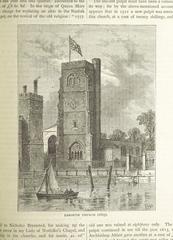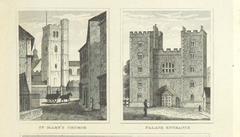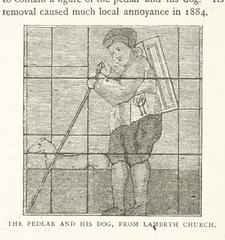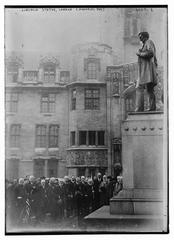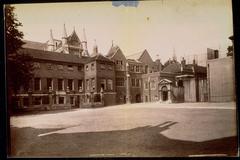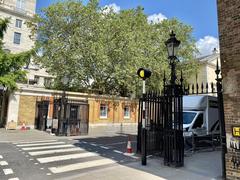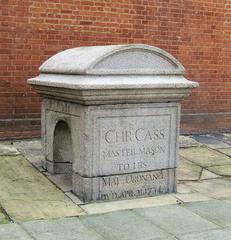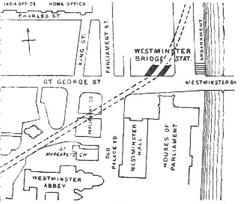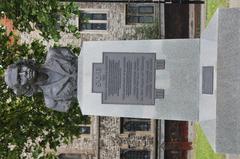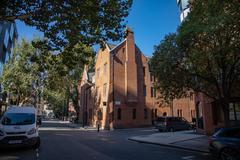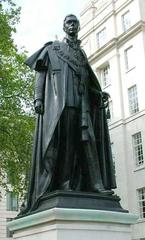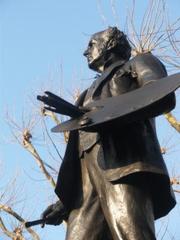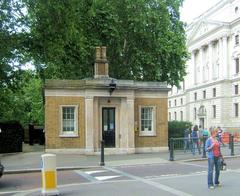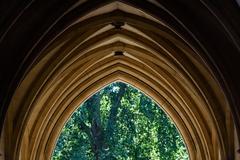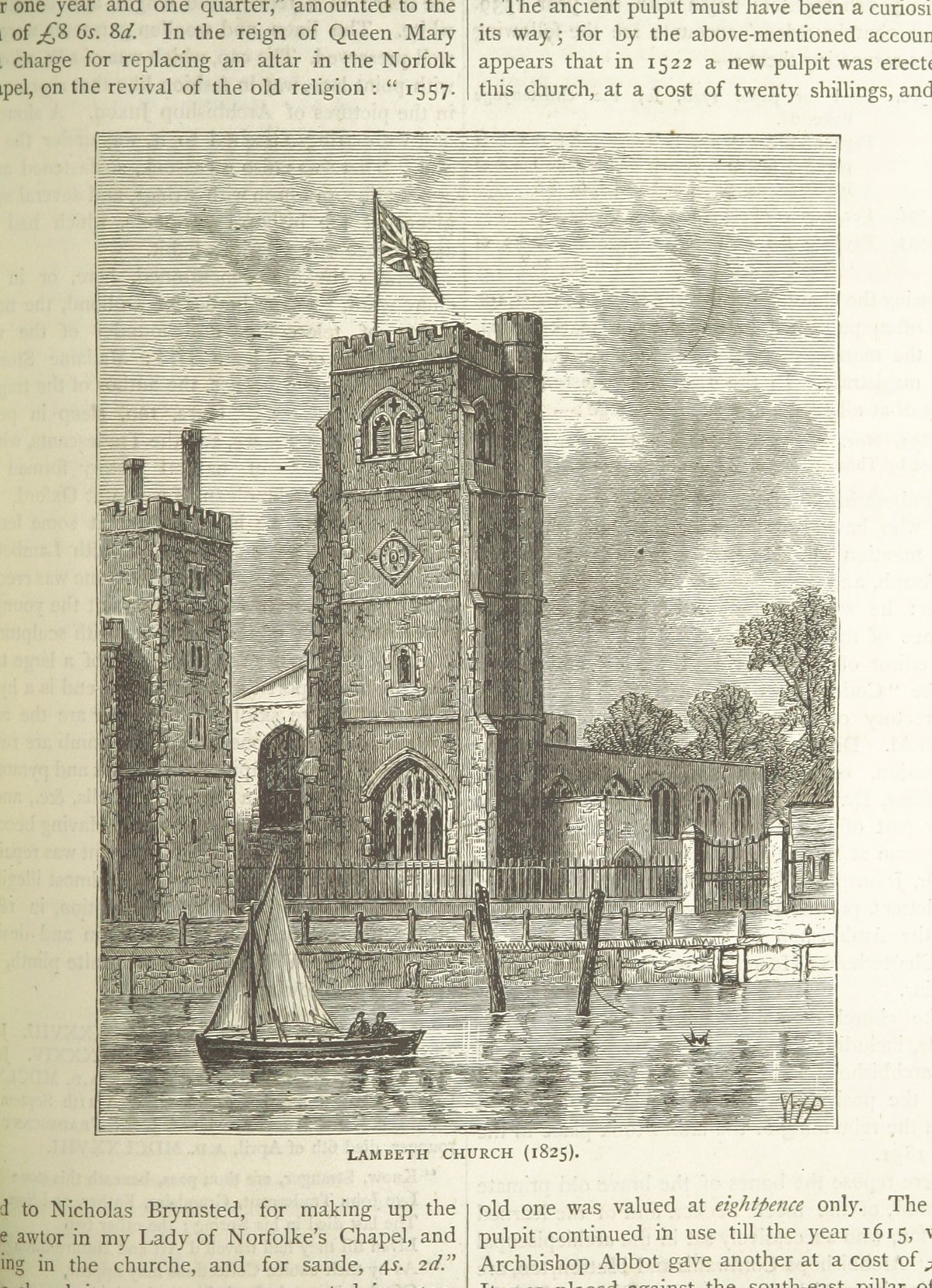
Church of St Mary Lambeth: Visiting Hours, Tickets, and Historical Significance in Kingston Upon Thames
Date: 14/06/2025
Introduction
The Church of St Mary at Lambeth—today known as the home of the Garden Museum—stands on the south bank of the Thames as one of London’s most remarkable historical sites. Founded in 1062 by Goda, sister of Edward the Confessor, this church has witnessed centuries of transformation, from its Saxon wooden beginnings to the medieval stone tower that still dominates its skyline. Its proximity to Lambeth Palace, the residence of the Archbishop of Canterbury, cements its role in ecclesiastical and national history. Over nearly a millennium, St Mary at Lambeth has undergone architectural evolution, survived wartime damage, and been repurposed as the Garden Museum—the world’s first museum dedicated to garden history and design. Today, it offers visitors an immersive blend of sacred architecture, horticultural heritage, and sweeping views of London’s landmarks. This guide provides in-depth insight into the church’s history, architectural features, cultural significance, and practical information for visitors, including opening hours, ticketing, accessibility, and nearby attractions (Garden Museum; Londonist; IanVisits).
Table of Contents
- Early Origins and Saxon Foundations
- Norman and Medieval Development
- Architectural Evolution: 14th to 16th Centuries
- Community and Notable Burials
- Role in Local and National History
- Victorian Changes and Modern Challenges
- Deconsecration and Adaptive Reuse
- Architectural Features and Visitor Experience
- Visiting St Mary at Lambeth: Practical Information
- Visuals and Media
- Frequently Asked Questions (FAQ)
- Plan Your Visit Today
- Summary and References
Early Origins and Saxon Foundations
The Church of St Mary at Lambeth traces its origins to 1062 when Goda, sister to King Edward the Confessor, established a wooden church on the site (Garden Museum; London Parish Clerks). This early church became a focal point for the local community and the manorial estate, marking the beginning of a long tradition of religious and communal life.
Norman and Medieval Development
After the Norman Conquest, the original wooden church was replaced by a stone building, reflecting the shift in ecclesiastical architecture across England (London Shoes). The site’s importance grew as Lambeth Palace, the London residence of the Archbishop of Canterbury, was established next door (Living London History). In 1197, the church and manor became the property of the Archbishop, solidifying its central role in England’s ecclesiastical hierarchy (London Parish Clerks).
Architectural Evolution: 14th to 16th Centuries
Significant reconstruction in 1377 produced the bell tower—a feature that remains largely original (Garden Museum; Historic England). The tower’s four stages, battlemented parapet, and octagonal turret are key medieval elements. The nave and aisles were rebuilt in 1851–52 in a style sympathetic to the 14th century. The 16th century saw the addition of notable wall monuments, including chantry tombs for Hugh Peyntwyn and John Mompesson, both unique examples of early English funerary art (Garden Museum).
Community and Notable Burials
The church and its yard are the burial sites for several Archbishops of Canterbury, members of the Howard family (including Elizabeth Boleyn), and most famously, John Tradescant the Elder—gardener and plant hunter (Living London History; Garden Museum). The Tradescant tomb is a pilgrimage site for gardening enthusiasts, while other tombs reflect changing tastes and social status through the centuries.
Role in Local and National History
St Mary at Lambeth has long served as an adjunct to Lambeth Palace. Its bells announced royal visits, and its riverside location made it a hub for travel between Lambeth and Westminster (London Parish Clerks). The church also provided the vantage point for Wenceslaus Hollar’s 17th-century panorama of London (Garden Museum).
Victorian Changes and Modern Challenges
By the 19th century, the churchyard was full, and burials ceased in 1854 (London Shoes). The church was rebuilt in 1851–52 by P.C. Hardwick, resulting in a harmonious blend of medieval and Victorian elements (Historic England). Bombing during WWII damaged the interior, leading to the replacement of stained glass with clear glass.
Deconsecration and Adaptive Reuse
Deconsecrated in 1972, St Mary at Lambeth was saved from demolition by John and Rosemary Nicholson and converted into the Garden Museum in 1977 (Garden Museum; Historica Fandom). This adaptive reuse preserved the building and established it as a center for garden history. Today, it is a Grade II* listed building (Historic England).
Architectural Features and Visitor Experience
Key features include the 14th-century tower, early 16th-century tomb-chests, and various memorial tablets (Historic England). The churchyard, now a tranquil garden, offers a peaceful escape in central London. The nave houses exhibitions related to British gardening, and the Ark Gallery displays the church’s most significant funerary monuments.
Visiting St Mary at Lambeth: Practical Information
Opening Hours
- The Garden Museum is open Tuesday to Sunday, 10:00 AM–5:00 PM. Closed on Mondays and public holidays. Always check the Garden Museum website for up-to-date hours.
Tickets & Pricing
- Adult admission: £10–£15
- Concessions for students, seniors, and children under 16
- Family tickets and memberships available
- Tower-only tickets: £4, free for under-18s
- Advance booking is recommended, especially during busy times
Accessibility
- Step-free access to all main galleries and gardens
- Accessible restrooms available
- Assistance dogs welcome
- The medieval tower is not wheelchair accessible due to its historic spiral staircase
Getting There
- Address: 5 Lambeth Palace Road, London SE1 7LB
- Nearest Underground: Lambeth North (Bakerloo), Waterloo, and Vauxhall (10-minute walk)
- Bus routes: 3, 77, 344, C10, 507
- No on-site parking; public transport is advised
Nearby Attractions
- Lambeth Palace
- Southbank Centre
- London Eye
- Houses of Parliament
- Riverside walks
Guided Tours & Special Events
- Regular guided tours available—book via the official website
- Seasonal exhibitions, talks, workshops, and family activities
Visuals and Media
- Explore virtual tours and high-resolution images on the museum’s website and social channels
- Suggested alt text: “St Mary at Lambeth tower view Thames,” “Tradescant tombs Garden Museum,” “Sackler Garden at Garden Museum”
Frequently Asked Questions (FAQ)
Q: What are the Garden Museum visiting hours?
A: Tuesday–Sunday, 10:00 AM–5:00 PM; closed on Mondays.
Q: How much do tickets cost?
A: Adults £10–£15; concessions and family tickets available; tower-only tickets £4.
Q: Is the museum accessible?
A: Yes, except for the medieval tower due to stairs.
Q: Are guided tours available?
A: Yes, bookable via the Garden Museum website.
Q: What’s the best way to get there?
A: Public transport—Lambeth North, Waterloo, or Vauxhall stations; multiple bus routes serve the area.
Plan Your Visit Today
Experience nearly a thousand years of history at St Mary at Lambeth. Marvel at medieval architecture, climb the historic tower for panoramic London views, explore the tranquil gardens, and delve into the story of English gardening. For up-to-date information, tickets, and events, visit the Garden Museum website and consider using the Audiala app for curated tours and travel tips.
Summary: Key Visiting Tips and Nearby Attractions
The Church of St Mary at Lambeth embodies a rich tapestry of London’s religious, architectural, and horticultural heritage. From Saxon foundations and a medieval tower to Victorian restorations and its modern life as the Garden Museum, the site offers a seamless journey through English history. Visitors can enjoy guided tours, special events, and breathtaking views, all within easy reach of Lambeth Palace, the Houses of Parliament, and the South Bank. For a smooth visit, check opening hours, book tickets in advance, and explore additional resources online (Garden Museum; Church Times; Londonist).
References & Further Reading
- Garden Museum, The Museum History: St Mary at Lambeth
- Londonist, Climb this medieval tower with views of the Houses of Parliament
- IanVisits, Climb a 680-year-old clock tower overlooking the Thames
- Church Times, New team vicar takes up post at green church
- Londontopia, Top Ten Things to See and Do in Lambeth
- London Parish Clerks, St Mary Lambeth Parish Information
- Historic England, Listing Entry: Church of St Mary at Lambeth
- London Shoes Blog, The Garden Museum and the St Mary at Lambeth Church
- Living London History, St Mary at Lambeth: The Medieval Gem with a Panoramic View
- Historica Fandom, Church of St Mary-at-Lambeth
- A Lady in London, Thames Walk London
